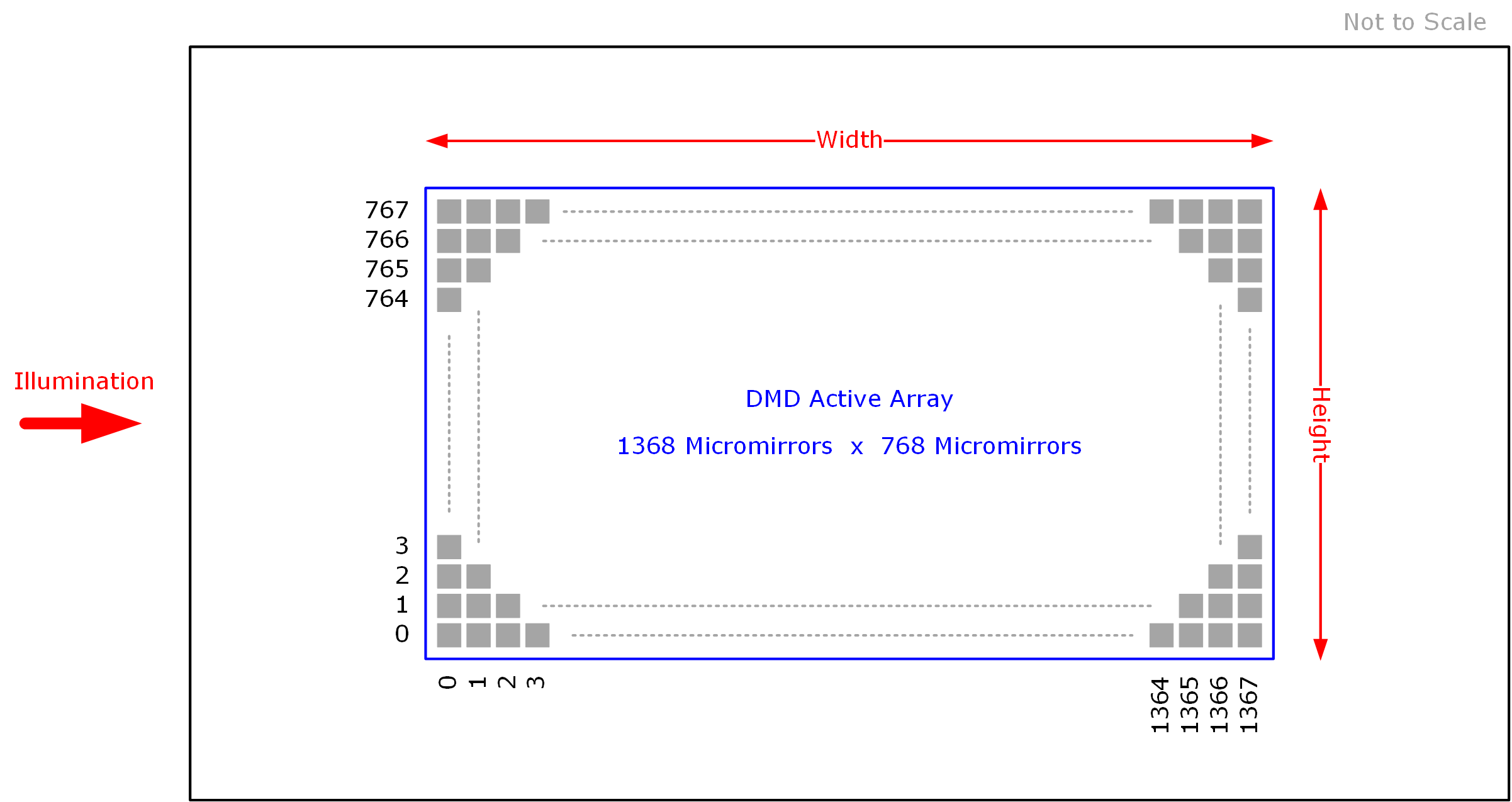JAJSGK1D november 2018 – july 2023 DLP3310
PRODUCTION DATA
- 1
- 1 特長
- 2 アプリケーション
- 3 概要
- 4 Revision History
- 5 Pin Configuration and Functions
-
6 Specifications
- 6.1 Absolute Maximum Ratings
- 6.2 Storage Conditions
- 6.3 ESD Ratings
- 6.4 Recommended Operating Conditions
- 6.5 Thermal Information
- 6.6 Electrical Characteristics
- 6.7 Timing Requirements
- 6.8 Switching Characteristics
- 6.9 System Mounting Interface Loads
- 6.10 Micromirror Array Physical Characteristics
- 6.11 Micromirror Array Optical Characteristics
- 6.12 Window Characteristics
- 6.13 Chipset Component Usage Specification
- 6.14 Software Requirements
- 7 Detailed Description
- 8 Application and Implementation
- 9 Power Supply Recommendations
- 10Layout
- 11Device and Documentation Support
- 12Mechanical, Packaging, and Orderable Information
6.10 Micromirror Array Physical Characteristics
| PARAMETER | VALUE | UNIT | ||||
|---|---|---|---|---|---|---|
| Number of active columns | See Figure 6-15(2). | 1368 | micromirrors | |||
| Number of active rows | See Figure 6-15(2). | 768 | micromirrors | |||
| Micromirror (pixel) pitch | See Figure 6-16. | 5.4 | µm | |||
| Micromirror active array width | Micromirror pitch × number of active columns; see Figure 6-15. | 7.387 | mm | |||
| Micromirror active array height | Micromirror pitch × number of active rows; see Figure 6-15. | 4.147 | mm | |||
| Micromirror active border | Pond of micromirror (POM)(1) | 20 | micromirrors/side | |||
(1) The structure and qualities of the border around the active array includes a band of partially functional micromirrors called the POM. These micromirrors are structurally and/or electrically prevented from tilting toward the bright or ON state, but still require an electrical bias to tilt toward OFF.
(2) The fast switching speed of the DMD micromirrors combined with advanced DLP
image processing algorithms enable each
micromirror to display two distinct pixels on the
screen during every frame, resulting in a full
1920 × 1080 pixel image being displayed.
 Figure 6-15 Micromirror Array Physical Characteristics
Figure 6-15 Micromirror Array Physical Characteristics Figure 6-16 Mirror (Pixel) Pitch
Figure 6-16 Mirror (Pixel) Pitch